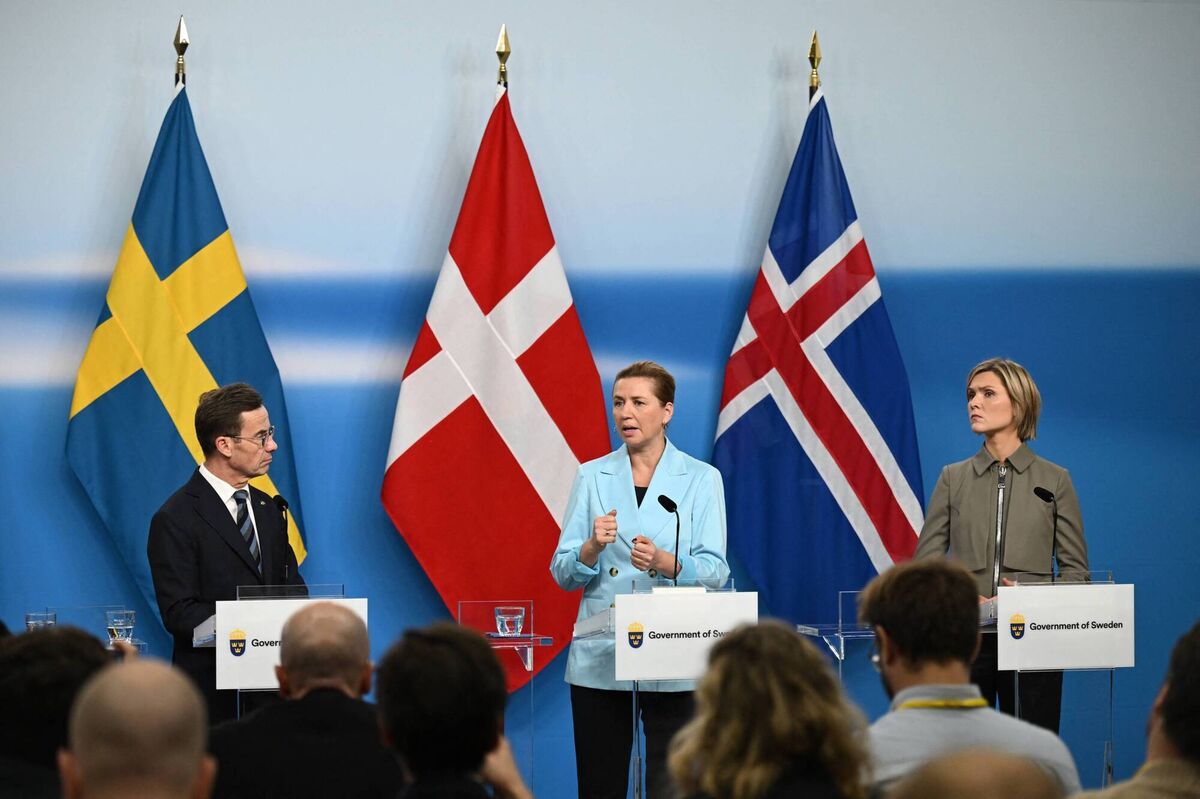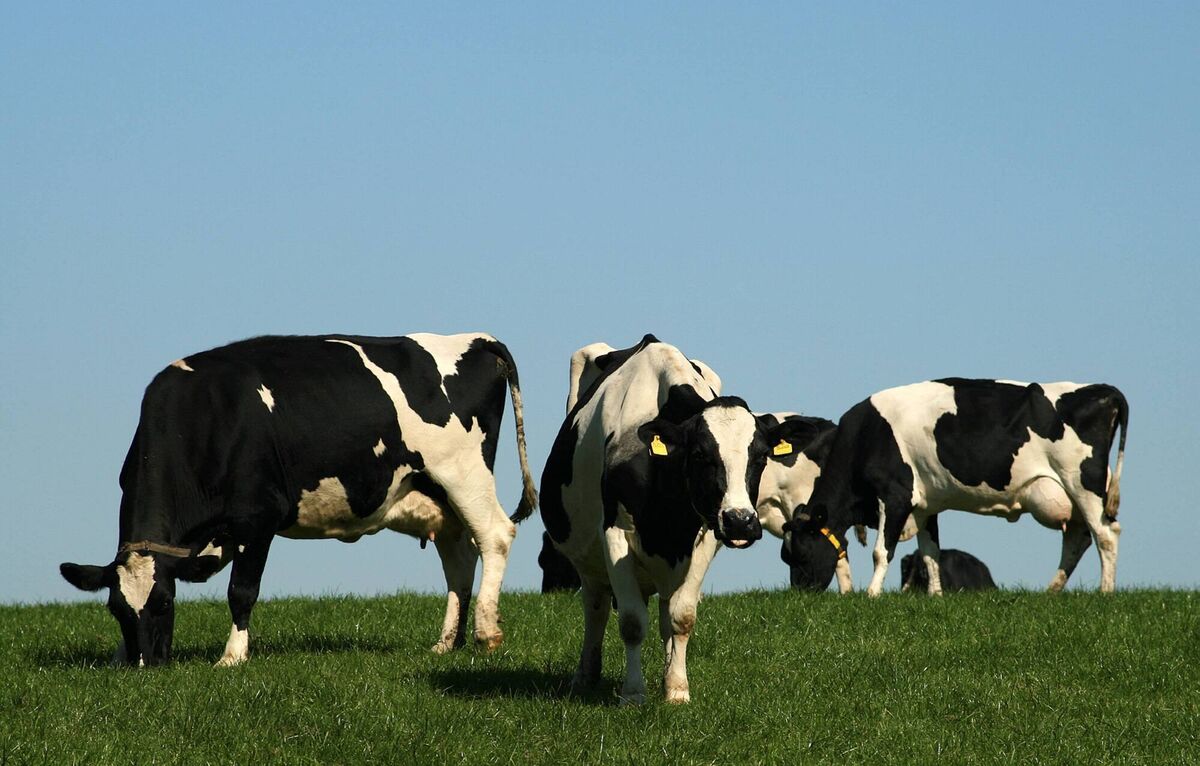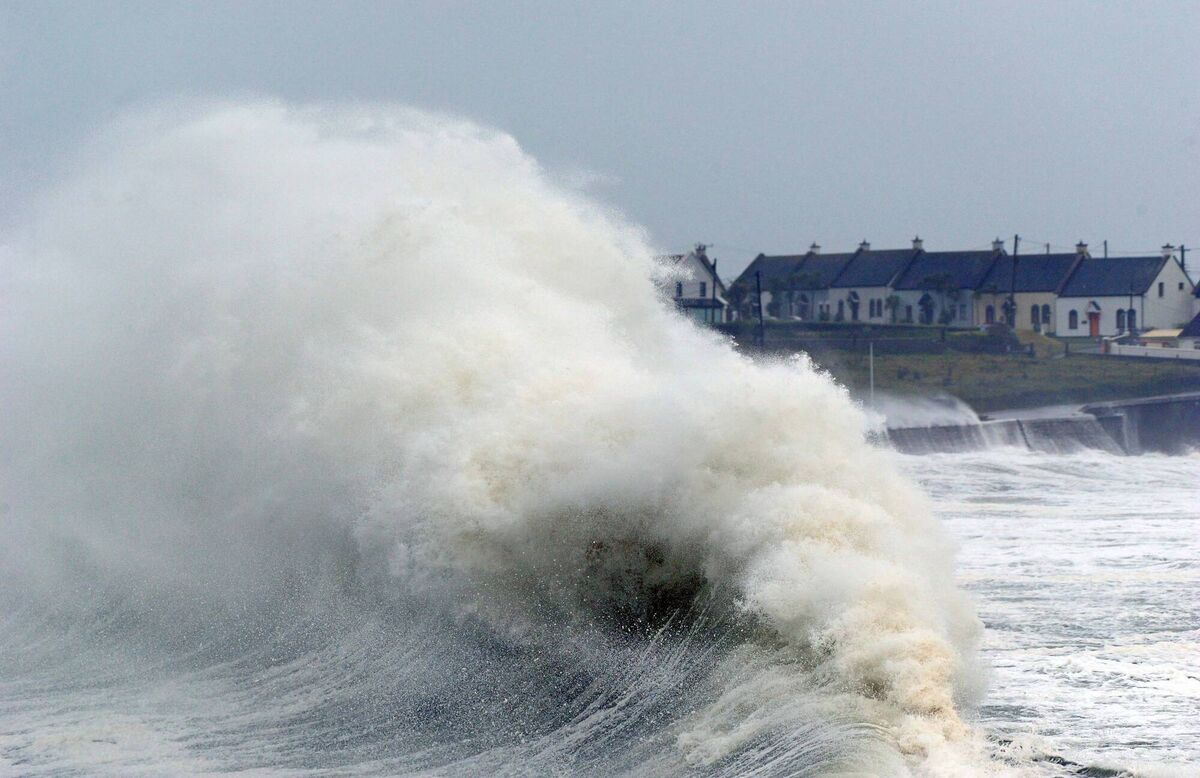John Gibbons: A big freeze could turn the Irish into climate refugees

Ironically, global warming could cause temperatures to collapse in Ireland: The 'cold blob' due to the accelerating Greenland Ice Sheet melt could shut down the Atlantic Meridional Overturning Circulation (Amoc), of which the Gulf Stream is a component. Picture: Sean Gallup/Getty
The Irish Refugee Council this week described government plans to place new obstacles in the path of refugees seeking permanent asylum in Ireland as “deeply alarming”.
These moves, flagged by justice minister Jim O’Callaghan are in the wake of the UK’s newly-announced crackdown on asylum applications.
In recent weeks, both the Taoiseach and Tánaiste have also dialled up the rhetoric on the need to make Ireland a less attractive destination for refugees and asylum seekers, with Micheál Martin stressing that Ireland could not be an “outlier” within Europe on this issue.
The unspoken assumption underpinning all these statements is that the flow of refugees and asylum seekers is and always will be inwards — in other words, involving people from abroad seeking safe harbour in Ireland.
But how safe is this assumption?
Ireland’s own history is deeply scarred by forced mass migration, with around 2m Irish people emigrating to the US in just the decade after 1845 to escape famine and destitution on this island.
Of course, something like that could never happen again — or could it?
Earlier this month, the government of Iceland formally designated the potential collapse of the Atlantic Meridional Overturning Circulation (Amoc) as an existential threat to the nation.
What Iceland and Ireland have in common is that both islands benefit enormously from being directly on the northward path of the Amoc, a massive system of submarine currents that transfer vast amounts of heat energy from around the Equator and carry it northwards, in the process warming the climate of north-western Europe.

A clear warning signal of such a shutdown has been in the recent expansion of a vast patch of fresh water, known as the ‘cold blob’, which has been growing in a region of the North Atlantic between the massive Greenland ice shelf and Ireland.
This is the only area on the planet that is cooling rather than warming, and is at least in part the reason Ireland has been spared the devastating heatwaves that have wracked much of Europe in the last few years. The cold blob has developed largely as a result of vast amounts of ice melting from Greenland’s giant glaciers.
Since the 1980s, more than 1,000bn tonnes of Greenland ice has melted and, in the past decade, the rate of ice melt has increased sixfold. As enormous rivers of this extremely cold fresh glacial water pour into the North Atlantic, it appears to be disrupting the Atlantic conveyor that pumps warm waters northwards from the tropics.
Scientists have been warning for decades that climate change risked destabilising or even shutting down this current, with devastating consequences for the entire North Atlantic region. The strength of the current has already dropped by around 15%, but recent studies have suggested we may be fast approaching a tipping point whereby the entire ocean circulation system shuts down.
Such a scenario “is a direct threat to our national resilience and security”, Iceland’s climate minister Jóhann Páll Jóhannsson told Reuters. This is the first time a climate-related phenomenon has been brought before Iceland’s National Security Council as “a potential existential threat”.
In October, the Nordic Council of Ministers, representing governments in the region, brought together a panel of experts to examine the grave implications of an Amoc shutdown.

A rapid regional cooling event in the North Atlantic could see the Arctic ice sheet spread much further south during winters, leading to giant icebergs posing a threat to shipping and sea lanes, with the possibility of islands such as Ireland and Iceland being effectively ice-bound for extended periods, with profound risks for food security.
Dutch research modelling last year concluded that “the present-day Amoc is on route to tipping”.
Such a shutdown would have “devastating and irreversible impacts” for the entire northern hemisphere, according to a letter signed by more than 40 international climate experts.
In this scenario, a bitter irony of global warming leading to regional cooling would see Ireland’s climate rapidly cooling, with mean temperatures dropping by several degrees in as little as a decade or two. This would be devastating for our grass-based agriculture system, as grass growth stops below 5-7C.
For Ireland, a collapse in food production and exports would lead to an even greater dependence on food imports and the likely culling of millions of livestock, as there would not be enough fodder to maintain them.
We would likely be left scrambling to produce food in heated greenhouses but, without years of advance planning and investment, this would be impossible to do at scale.

Increased storminess is another expected consequence of an Amoc shutdown.
Air flows are largely powered by the difference in temperature between one location or another, known as the temperature gradient.
The cooling of north-western Europe would be matched by sharp increases in temperatures in the tropics, as excess heat is no longer being drawn away. This sudden increase in the temperature gradient would, according to former Nasa director James Hansen, “drive superstorms stronger than any in modern times".
“All hell would break loose in the North Atlantic and neighbouring lands”, he warned.
An Ireland later this century wracked by powerful storms and locked in semi-frozen conditions for months at a time seems hard to contemplate, yet the current best-guess scientific estimate is that there is an evens chance of the Amoc shutting down before the end of this century.
Given the gravity of the risks involved, small wonder Iceland’s government is now going onto an emergency footing to prepare for this eventuality.
And Ireland?
The Department of Finance recently published 'Future Forty', to help guide Ireland in planning all the way to 2065. The only passing reference to an Amoc collapse in this entire 240-page document is buried in the footnotes.
Yet it’s not like we haven’t been warned.
Then climate minister, Eamon Ryan, told the Cop29 conference in Baku last November that an Amoc shutdown “would mean our temperate climate would disappear, and we would be faced with freezing temperatures, affecting our agriculture, our food security, and our entire way of life”.

Should this scenario come to pass, life will get immeasurably more difficult in the decades ahead, with millions of Irish people likely to be trying to migrate to warmer climes. Freedom of movement for EU citizens would be one of the earliest casualties in such a world.
Where would we go, and who exactly is going to welcome in an exodus of desperate Irish climate refugees?
These are issues we as a society need to reflect on carefully, especially as our own politicians are now shaping up to “get tough” on migrants.
- John Gibbons is a journalist and the author of The Lie of the Land — a Game Plan for Ireland in the Climate Crisis (Sandycove/Penguin Books)
- The book is on the Non-Fiction Book of the Year shortlist of this year's An Post Irish Book Awards

Read More
CLIMATE & SUSTAINABILITY HUB

















